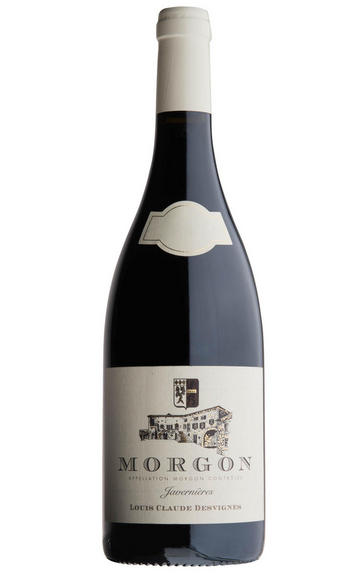
2022 Morgon, Javernières, Les Impénitents, Louis Claude Desvignes, Beaujolais
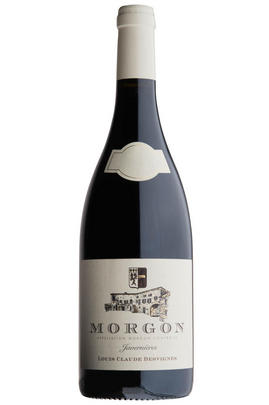
Critics reviews
Just under 4,000 bottles were produced.
The 2022 Morgon Les Impénitents Javernières is a homage to Louis Claude (coined by French wine writer Michel Bettane) and debuted with the 2009 vintage. It comes from very old vines planted in 1912, just after phylloxera. The bouquet is easily the most floral amongst the range with wilted rose petal, lavender and iris flower, beautifully defined and utterly seductive. The palate is medium-bodied with pliant tannins and a gentle grip - very focused with an almost understated yet very harmonious finish. Bon vin.
This was my first visit to Louis-Claude Devignes in Villié-Morgon. I met with Louis-Benoît and Claude-Emmanuelle Desvignes, their father having ingeniously named his children after his appended given name, thereby avoiding any need to really change the label. More winemakers should do that! They represent the eighth generation to run the Domaine. “Our father was one of the first to put the lieu-dit on the label,” Benoît explained in their barrel cellar. “Louis-Claude was born in 1937 and retired in 2004. My father never needed herbicides. I work alongside my sister.” They now farm organically and undertake a semi-carbonic maceration.
Drink 2024 - 2040
Neal Martin, Vinous.com (May 2023)
About this WINE
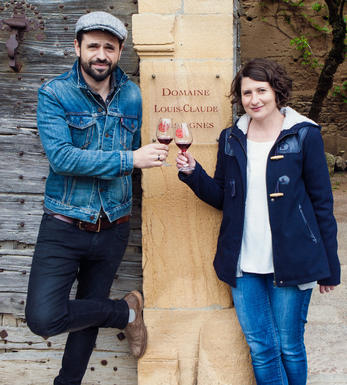
Domaine Louis Claude Desvignes
This fabled domaine, based in the town of Villié-Morgon, is today run by siblings Louis-Benoît and Claude-Emmanuelle Desvignes – the eighth generation of their family to make wine in Beaujolais. It is renowned for producing concentrated, age-worthy Morgon wines, which gain exceptional complexity with time in bottle.
Benoît and Emmanuelle (as they prefer to be called) have, in recent years, updated the winery and begun farming organically, but their method of vinification is the same as their forebears’: semi-carbonic maceration, with a grille to keep the cap submerged. The length of the maceration varies from cuvée to cuvée, being around 10 days for the relatively early-drinking Voûte Saint-Vincent, but longer for Javernières and Les Impénitents, of which only a tiny quantity is produced from a parcel of century-old vines.
From the 2018 vintage, the Desvignes are also producers of our Own Selection Beaujolais-Villages.
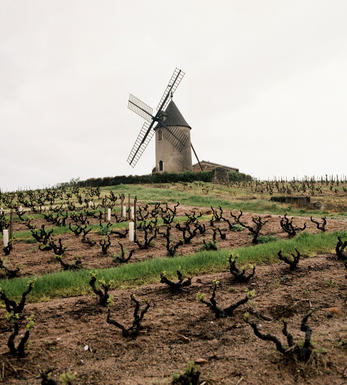
Morgon
With 1100 ha of vines, Morgon is the second largest Cru after Brouilly, producing wines that are only marginally less powerful than those of Moulin-à-Vent. Certainly Morgon’s are the firmest in the region, with a bouquet of great purity and compact Gamay fruit. Morgon needs more time than other Crus before it can be broached - normally 2-3 years for its most serious exponents – and develop its rich, savoury flavours which lead to a Pinot Noir-like maturity.
The ‘Classico’ heart of the Morgon region is the Mont du Py, just south of the commune of Villié-Morgon. The finest wines almost exclusively come from its Côte de Py slope, whose aspect and rich schistous soil contribute to greater ripeness, and yield wines that are denser than anywhere else in the appellation. As you would expect from a region of this size the character and quality of Morgon can vary considerably, but the best are as good, and as sturdy and long-lived, as any other Beaujolais you will find.
Recommended Producers: François Calot, Maurice Gaget, Louis-Claude Desvignes.
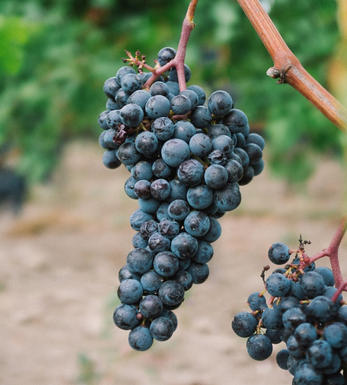
Gamay
A French variety planted predominately in Beaujolais where it is the grape behind everything from light and often acidic Beaujolais Nouveau through to the more serious and well-structured wines from the 10 cru villages. It takes its name from a hamlet just outside Chassagne-Montrachet and was at one stage widely planted on the Côte d`Or. However it was gradually phased out due to its poor yield and supposed poor quality of its wines.
The majority of Gamay wines in Beaujolais are labelled as Beaujolais or Beaujolais-Villages and are deliciously juicy, easy drinking, gulpable wines. Of more interest are the Cru wines from the 10 villages in the north of the region where the soil is predominantly granitic schist and where the vines are planted on gently undulating slopes. These can be well-structured, intensely perfumed wines, redolent of ripe black fruits and, while delicious young, will reward medium term cellaring.
Gamay is also grown in the Touraine region of the Loire where it produces soft, well-balanced, gluggable wines for drinking young.


Buying options
Add to wishlist
Description
Just under 4,000 bottles were produced.
The 2022 Morgon Les Impénitents Javernières is a homage to Louis Claude (coined by French wine writer Michel Bettane) and debuted with the 2009 vintage. It comes from very old vines planted in 1912, just after phylloxera. The bouquet is easily the most floral amongst the range with wilted rose petal, lavender and iris flower, beautifully defined and utterly seductive. The palate is medium-bodied with pliant tannins and a gentle grip - very focused with an almost understated yet very harmonious finish. Bon vin.
This was my first visit to Louis-Claude Devignes in Villié-Morgon. I met with Louis-Benoît and Claude-Emmanuelle Desvignes, their father having ingeniously named his children after his appended given name, thereby avoiding any need to really change the label. More winemakers should do that! They represent the eighth generation to run the Domaine. “Our father was one of the first to put the lieu-dit on the label,” Benoît explained in their barrel cellar. “Louis-Claude was born in 1937 and retired in 2004. My father never needed herbicides. I work alongside my sister.” They now farm organically and undertake a semi-carbonic maceration.
Drink 2024 - 2040
Neal Martin, Vinous.com (May 2023)
wine at a glance
Delivery and quality guarantee